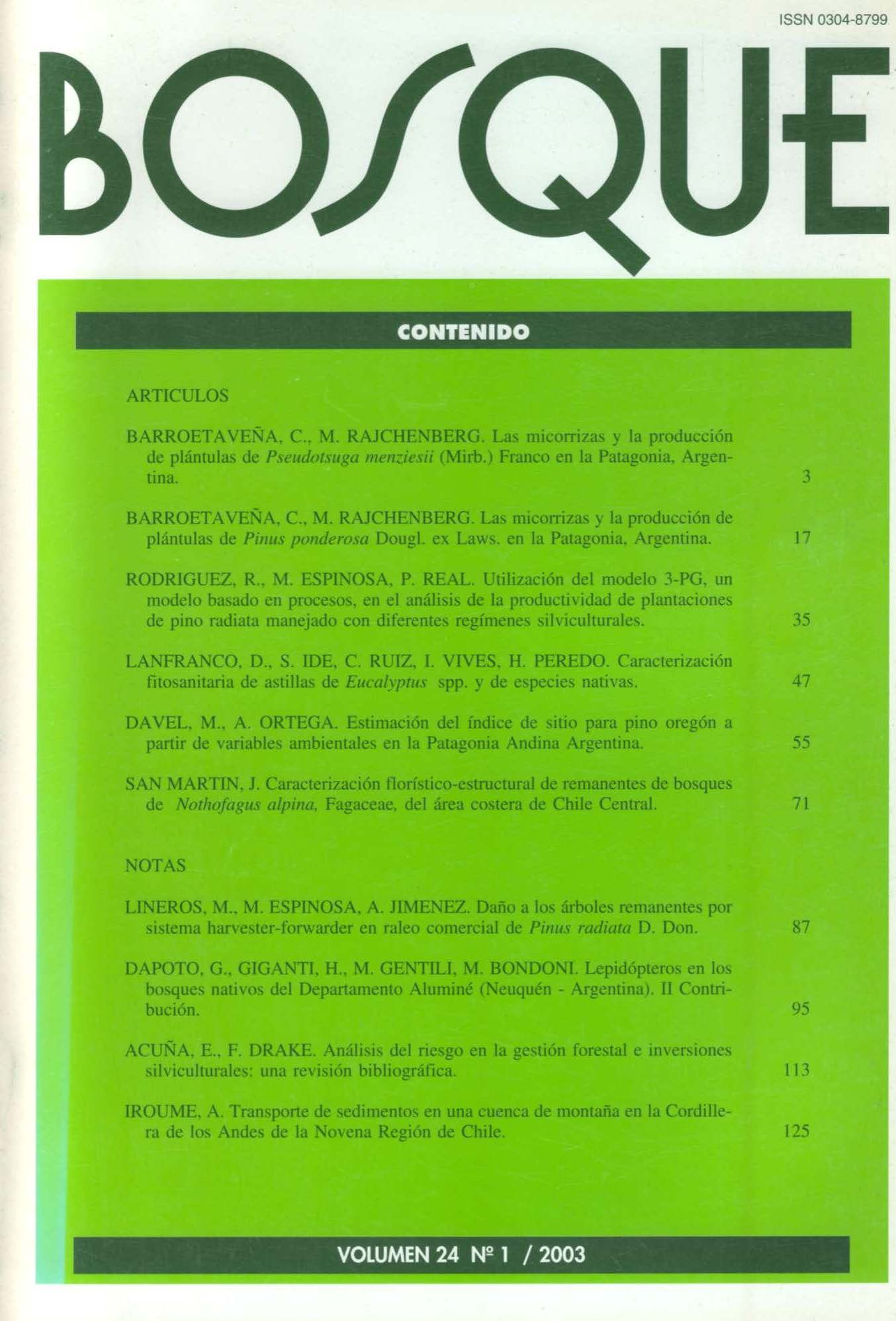Floristic and vegetative structure of the Nothofagus alpina (Fagaceae) remanent forest of the Coastal Range, central Chile
Main Article Content
Abstract
We studied the floristic and vegetative structure of the Nothofagus alpina (Fagaceae) “Rauli” forest stand in Copiulemu (latitude 36º 03’ S; longitude 72º 38’ W), at the northern extremity of Region VIII in the Coastal Range, central Chile.
The floristic richness comprises 82 vascular species, 87.7% of which are native and distributed between the Pteridophyta (four species), the Gymnospermae (two species), and the Angiospermae, including Dicotyledoneae (62 species) and Monocotyledoneae (14 species). Trees and herbs dominate in the vertical layers, with a total of 25 species. Site diversity and postanthropic disturbance have produced a spatially heterogeneous distribution of the species. To determine the floristic composition, six samples of vegetation were necessary. Ordered according to frequency and importance, the floristic composition is defined by Nothofagus alpina, N. glauca, N. obliqua, Gevuina avellana, Aextoxicon punctatum, Aristotelia chilensis, Jovellana punctata, Blechnum hastatum, Adiantumchilense, and Lapageria rosea.
The species texture is defined by sclerophyllous floristic elements (17 species), mesic elements of the Maulino forest (40 species) and Valdivian rainforest (22 species), and hygrophilous elements (three species). Species with a critical conservation status are Gomortega keule, Nothofagus glauca, and Citronella mucronata, two endemic families of Chilean temperate forests, Aextoxicaceae and Gomortegaceae, and species that occur only in the Coastal Range, Gomortega keule, Herreria stellata, Pernettya insana and Sphacele chamaedryoides, marking the phytogeographical importance of the forest.
We conclude that the stand organization and floristic composition of the Nothofagus alpina forest correspond to features of a secondary forest, with a structure transitional to a Nothofagus glauca forest. The quality and composition of species and their conservative characteristics contribute taxonomic and biogeographical importance to the forest.

